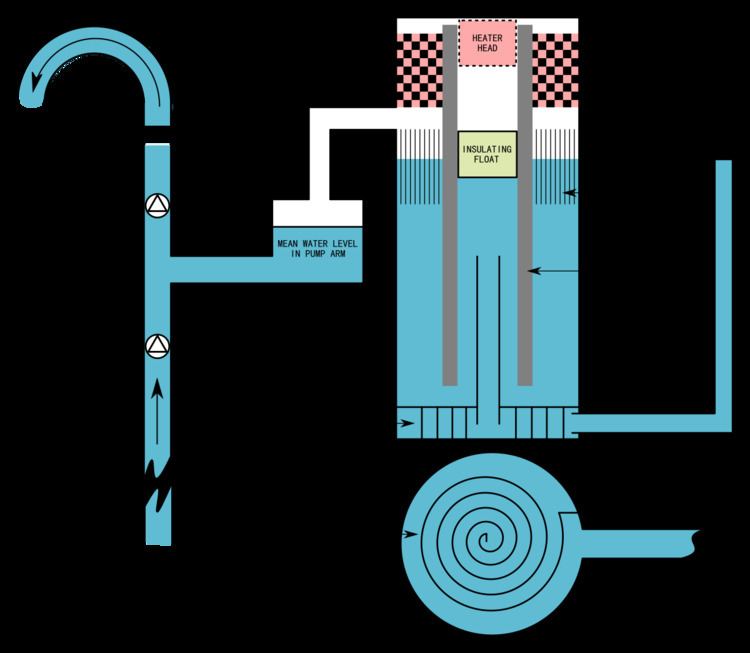 | ||
A Fluidyne engine is an alpha or gamma type Stirling engine with one or more liquid pistons. It contains a working gas (often air), and either two liquid pistons or one liquid piston and a displacer.
Contents
The engine was invented in 1969. The engine was patented in 1973 by the Atomic Energy Authority UK.
Engine operation
Working gas in the engine is heated, and this causes it to expand and push on the water column. This expansion cools the air which contracts, at the same time being pushed back by the weight of the displaced water column. The cycle then repeats.
Engine as a pump
In the classic configuration, the work produced via the water pistons is integrated with a water pump. The simple pump is external to the engine, and consists of two check valves, one on the intake and one on the outlet. In the engine, the loop of oscillating liquid can be thought of as acting as a displacer piston. The liquid in the single tube extending to the pump acts as the power piston. Traditionally the pump is open to the atmosphere, and the hydraulic head is small, so that the absolute engine pressure is close to atmospheric pressure.
Demonstration video
The videos show operation of a model Fluidyne engine. Hot pipe is heated by a heat gun, and water column oscillation builds up to a steady-state level. Second video shows a detail of the actual water displacement. Fluidyne pumps are commercially available.
